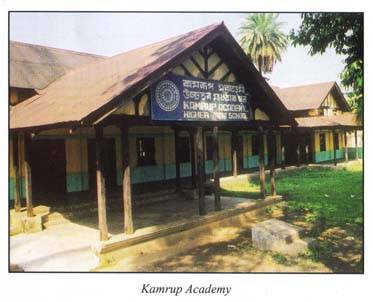“What India needs is man-making education as prescribed by Swami Vivekananda. Nationalist institutions like Kamrup Academy should serve as the model for the country”, thus remarked Shyama Prasad Mukherjee, the Union Education Minister in 1930s, when he made his first visit to Kamrup Academy.
Why I started with a remark on Kamrup Academy and nationalism, is because they have their roots in the issuing of Cunningham Circular in 1930 in Assam, by J. R. Cunningham, the then powerful director of public information of Assam.
Yes, Cunningham Circular interestingly, did not just emerged from the intensive nationalist sentiments of the people of Assam in the colonial period, but it also pushed the Swadeshi sentiments ahead, leading Assamese to start a nationalist educational institution called Kamrup Academy.
As the story goes, in the wake of the Swadeshi Movement in 1930, the enlightened section of Assamese, Bengali and Marwari communities of Guwahati started boycotting foreign goods like salt, sugar, clothes, etc., in the eastern part of the country.
This naturally agitated the authorities and the agitation resulted in J. R. Cunningham issuing the Cunningham Circular which put a ban on all the anti-government activities and protests. Any anti-British and pro-Swadeshi activity got prohibited and those who opposed the act, were forced to quit their respective educational institution.
To this, East Indians reacted by themselves boycotting British educational institutions and opening the first nationalist school in the East, Kamrup Academy.
The move was in conjunction with the opposing Swadeshi Movement under which the revolutionaries like Tagore and Gandhi were promoting Indian education and values, which were regressive and misleading according to Lord McCauley, who advocated British education as the better form of instruction for the colonist “enlightenment project” in the East.
The schools like Tagore’s Shantiniketan and Kamrup Academy, were a biting reaction towards the colonial criticism of Oriental education and literature as not being up to the mark and worth incorporating in educational policies.



